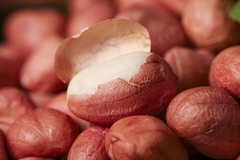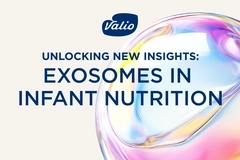Plant-based diet may prevent and reverse heart disease in rats with hypertension
Key takeaways
- A plant-based diet prevented and reversed coronary microvascular dysfunction (CMD) in hypertensive rats.
- CMD, a serious heart condition, is a major risk factor of hypertension (high blood pressure).
- The diet’s beneficial effect was targeted to heart blood vessels despite the rats’ continued hypertension.
A new study involving rats with high blood pressure (hypertension) found that a plant-based diet consisting of fruits, vegetables, nuts, and legumes can help prevent and reverse coronary microvascular dysfunction (CMD). Hypertension is a major risk factor for this disease.
CMD is a type of heart disease that occurs following damage to the tiny blood vessels that regulate blood flow to heart tissue. In humans, it can lead to frequent chest pain, hospitalizations, heart failure, and deaths.
“We found that a plant-based diet both prevented the development of CMD and reversed established CMD in hypertensive rats, which translates well to the clinical setting,” says Rami Najjar, corresponding author of the study and a postdoctoral fellow at Emory University School of Medicine, US, in the Division of Cardiology.
Investigating the dietary intervention
The researchers highlight that CMD afflicts women more severely than men. Women have higher rates of hospitalizations compared to men after diagnosis.
They note therapies for CMD are only moderately effective, and patients continue to have poor outcomes. This is one of the first studies to look at the role of diet in treating CMD.

“Interestingly, the beneficial effects of the plant-based diet in CMD occurred despite the persistence of hypertension, showing that the diet was having a targeted effect on the small blood vessels of the heart,” Najjar explains.
“We believe this effect occurred due to improved function of blood vessel cells, counteracting the damaging effects of hypertension. When these cells are damaged, blood vessels in the heart contract and blood cannot flow well, the cause of chest pain in humans with CMD.”
He notes the plant-based diet “rescued” the function of these cells, allowing blood vessels to dilate normally again. “These exciting results support clinical trials to test plant-based diets in human CMD, and we hope to do this soon.”
Antioxidants in the spotlight
The research team fed female rats classified as spontaneously hypertensive for six months either a control diet — refined without plant foods — or a plant-based diet.
The plant-based diet consisted of 28% fruits, vegetables, nuts, and legumes. Notably, both diets were matched for all nutrients, meaning that the only difference was the high antioxidant content of the plant-based diet.
“If a human ate this diet, it would contain one cup of black beans, one large red bell pepper, 1.5 cups of Brussels sprouts, two lemons, one medium sweet potato, 1.5 cups of walnuts, and one cup of blueberries each day,” note the researchers.
After six months, a subgroup of rats eating the control diet was switched to the plant-based diet to treat CMD after it was established. The team assessed CMD by measuring coronary flow reserve, an approach used in the clinic.
The researchers also used Georgia State’s recently established Advanced Translational Imaging Facility, using cardiac MRI to look at blood flow of the heart muscle. Additionally, they isolated blood vessel cells from the rats’ hearts to assess their function while examining markers of damage in the heart tissue.
The research is published in the Journal of the American Heart Association.
















